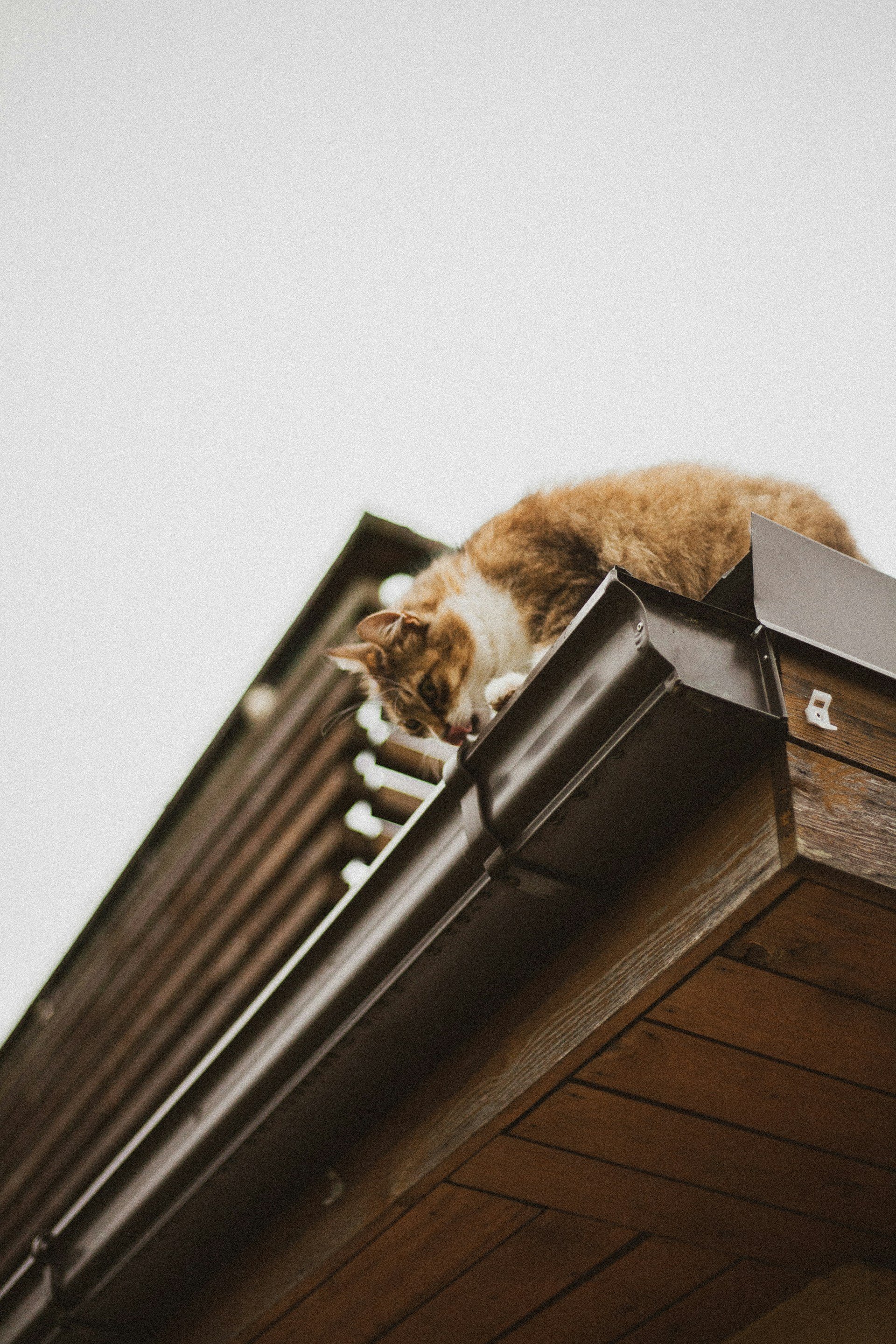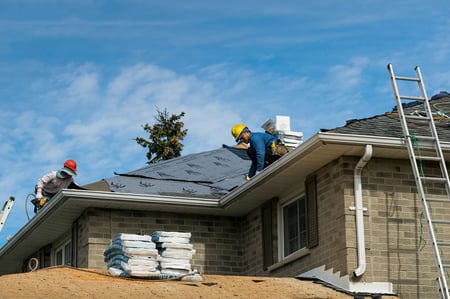The Pros and Cons of Rain Diverters
November , 2023 | 6 min. read

Imagine a heavy rain pouring down on a roof, and the water peacefully cascading off its edges. Is there anything better? I mean, besides puppies, or candy, of course. We all know that while rain is essential for gardens, wildlife, and setting the mood for the occasional afternoon snooze, too much of it in the wrong places can cause trouble for your home. That's where rain diverters come in.
Here at RoofCrafters, we’re happy to share that these nifty devices are like helpful little guides for rainwater, steering it away from delicate spots on your roof where too much of a good thing might cause problems. However, like Bret Michaels once said, “Every rose has its thorn”, and any solution comes with its own set of upsides and downsides.
So, if you happen to live in a state where the sun doesn’t shine her light quite as much as you’d like her to, and all of this rain has got you (and your home) feeling blue, stick around until the end of this article! You’ll have the opportunity to learn about rain diverters and the pros and cons associated with these radical roof accessories. Let’s get started!
What Are Rain Diverters?
 Photo Credit: Gutter Guard
Photo Credit: Gutter Guard
Roof rain diverters are devices designed to redirect rainwater runoff from one part of a roof to another location. They are typically installed to prevent water from overflowing or accumulating in specific areas where it could cause damage.
These diverters are often made of materials like metal or plastic and come in various shapes and sizes. They are placed on the roof to catch rainwater and channel it away from areas where it might cause problems, such as doorways, windows, or areas where water pooling can lead to leaks or structural issues.
Rain diverters can be especially useful in situations where there's heavy rainfall or where the roof design might cause water to collect in certain spots, providing a solution to guide the water away and prevent potential damage.
What Are the Pros of Investing in Rain Diverters?
Rain diverters offer several different advantages to homeowners including:
.png?width=1200&height=200&name=Recommended%20Reading%20(51).png)
Water damage prevention: They help prevent water damage by redirecting rainwater away from vulnerable areas of the roof, such as doorways, windows, or areas prone to leaks.
Protect structural integrity: By preventing water from accumulating in specific spots, they safeguard the structural integrity of the building. Excessive water pooling can weaken roofs and cause leaks.
Preserve landscaping: Diverting water away from the foundation helps protect landscaping and prevents erosion in the surrounding area.
Maintenance reduction: They can reduce maintenance needs by preventing water buildup, which can lead to mold, mildew, or other issues that would require cleaning or repairs.
Customizable solutions: Rain diverters come in various shapes and sizes, allowing for customized solutions tailored to the specific needs of a roof.
Cost-effectiveness: They are relatively affordable and can prevent potentially costly repairs associated with water damage.
Easy installation: In most cases, rain diverters are easy to install and don't require complex tools or extensive expertise.
Overall, rain diverters provide a pretty effective and relatively simple solution to manage rainwater runoff and protect buildings from water-related damage.
What Are the Cons of Investing in Rain Diverters?
As we all know, not everything in life can be 100% perfect. While rain diverters offer several benefits, there are some limitations or potential drawbacks to consider:
.png?width=1200&height=200&name=Recommended%20Reading%20(52).png)
Limited effectiveness: In heavy rainfall or during storms, diverters might not handle large volumes of water efficiently. They may overflow or become less effective in redirecting water away from vulnerable areas.
Maintenance needs: Depending on the design and material, diverters may require periodic maintenance, such as cleaning debris or ensuring they remain properly positioned to function effectively.
Aesthetics: Some people might find rain diverters unappealing or bulky in terms of appearance, impacting the aesthetics of the building or roofline.
Installation challenges: While they are generally easy to install, depending on the roof's design and materials, installing diverters might be challenging in some cases, requiring professional assistance.
Potential blockage: Debris such as leaves, twigs, or other materials can accumulate in diverters, leading to blockages that hinder their effectiveness.
Material durability: Depending on the material used, diverters might degrade over time due to exposure to weather elements, potentially requiring replacement.
Limited coverage: Diverters might not cover the entire roof area, leaving some parts vulnerable to water accumulation.
Consideration of these drawbacks is important when deciding whether rain diverters are suitable for managing water runoff on a particular roof or building structure.
Do the Pros Outweigh the Cons of Rain Diverters?

Determining whether the pros outweigh the cons of rain diverters depends on various factors such as the specific needs of the building, the local climate, the roof's design, and the level of maintenance one is willing to undertake.
In many cases, the pros of rain diverters can outweigh the cons, especially in situations where:
- There's a consistent issue with water pooling or potential damage to specific areas of the roof.
- Regular maintenance can be easily managed to ensure diverters remain effective.
- The building's design or local climate demands a solution to manage water runoff efficiently.
- Cost-effectiveness in preventing potential water-related damage is a priority.
However, for some homeowners, the cons might be more significant. For instance:
- If the roof doesn't face significant water runoff issues, the benefits of diverters might not justify their installation.
- Aesthetics could be a primary concern, especially if the diverters significantly alter the building's appearance.
- In areas with infrequent heavy rainfall, the need for diverters might be minimal.
Ultimately, the decision should be based on a thorough assessment of the specific circumstances. Sometimes, a combination of solutions (such as gutter systems, proper roof design, and occasional maintenance) might suffice without the need for rain diverters.
Balancing the Benefits and Considerations of Rain Diverters
As you now know, rain diverters offer an effective solution to manage water runoff and protect buildings from potential water-related damage. Their ability to redirect rainwater away from vulnerable areas can prevent structural issues, water damage, and landscaping erosion.
However, considerations about maintenance, effectiveness during heavy rainfall, aesthetics, and installation challenges should be weighed against their benefits. In situations where water pooling or potential damage is a concern, and where regular maintenance can be accommodated, rain diverters can serve as a cost-effective and practical solution.
Yet, the decision to use rain diverters should be based on a careful assessment of individual building needs, climate conditions, and aesthetic preferences to determine if the advantages outweigh the potential drawbacks. If you’re interested in taking rain diverters into consideration, be sure to hit the “Schedule an Inspection” button down below, and one of our expert estimators will walk you through your options!
My name is Cassie, and I’m the Content Manager here at RoofCrafters. I was born and raised in Chicago, Illinois, and made my way out to Florida post-college graduation. I’m incredibly passionate about writing and creating valuable content that helps others with the collaboration of my marketing team. When I’m not working, I enjoy shopping (a little too much), spending time at the beach, and reading!



